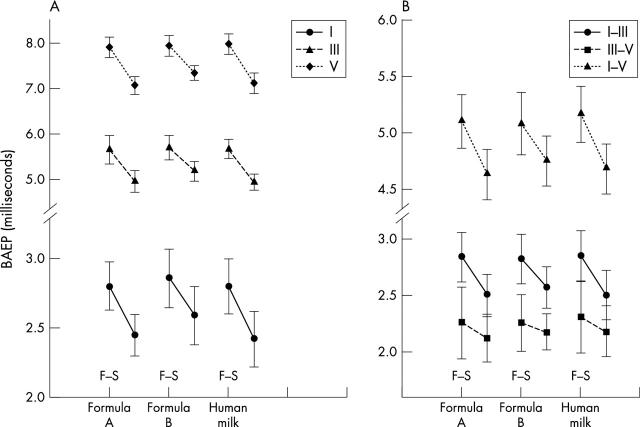Abstract
Design: Throughout the 16 week study period, infants in the formula A group (n = 28) were assigned to be fed exclusively with the same formula supplemented with DHA, and infants in the formula B group (n = 26) were assigned to receive only a DHA unsupplemented but otherwise similar formula. During the study period, the first 26 consecutive infants to be fed exclusively on their mother's milk for at least the first 16 weeks of life were chosen as the control group. BAEP measurements were performed twice: at the first and 16th week of age.
Results: There were no significant differences among the study and control groups in the BAEP measurements performed at the study entry. At 16 weeks of age, all absolute wave and interpeak latencies in the study and control groups had significantly decreased. The decreases were significantly greater in the formula A and control groups than in the formula B group.
Conclusions: Infants fed on human milk or a formula supplemented with LCPUFAs during the first 16 weeks of life show more rapid BAEP maturation than infants fed on a standard formula. Although the clinical importance and long term effects of these findings remain to be determined, routine supplementation of formulas with LCPUFAs should be considered.
Full Text
The Full Text of this article is available as a PDF (212.0 KB).
Figure 1 .
Changes in absolute wave (A) and interpeak (B) latencies in the study and control groups at 16 weeks of age (S, second) compared with the values obtained at study entry (F, first). Formula A, Farley's First Milk; formula B, Nutrilon I.



